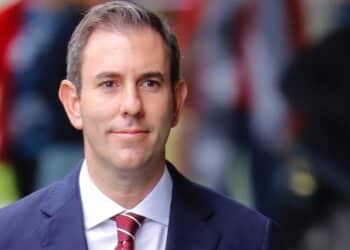The Australian Securities and Investments Commission (ASIC) levy is something the financial advice community have come to expect, but it has grown ever more contentious as the cost to fund the regulator has blown out.
Originally introduced in 2017 on the back of the Financial System Inquiry, in hindsight, the first iteration of the industry funding model seemed quaint, slugging advisers for a minimum licensee levy of $1,500 and $934 per adviser for the 2017–18 financial year.
The total cost to advisers during the first period was $26.15 million. At the time, there was 25,406 financial advisers to spread the cost around.
Subsequent years have seen an increase in ASIC’s costs that are attributable to the financial advice sector alongside a precipitous decline in adviser numbers – the pain of which was held off by a freeze to the levy.
The freeze was introduced in August 2021 by then-treasurer Josh Frydenberg as “temporary and targeted relief” for financial advisers. Among other things, it saw ASIC levies charged for personal advice to retail clients restored to their 2018–19 level of $1,142 per adviser.
Indeed, a review of the industry funding model handed down in 2023 found that the freeze saved advisers from the most expensive years of ASIC’s regulatory costs related to advice – slashing the bill for the sub-sector from $60 million in 2020–21 to $25.8 million, and from $56.7 million in 2021–22 to $22.8 million.
However, despite the regulator last year noting that the cost of regulating licensees that provide personal advice to retail clients was down to $55.5 million in 2022–23, this provided little solace to advisers who were set to be hit with a $3,217 bill as the freeze ended.
This number eventually settled at $2,818 – and the final cost of regulating personal advice sitting at $47.6 million – after considerable pushback from the advice sector, but with the number of advisers continuing to dwindle the costs have gone back up.
The 2023–24 estimate, announced on Monday, is $48.4 million, which is to be divided among a total of 2,766 AFS licensees encompassing 15,371 advisers.
As such, the levy will amount to a minimum $1,500 plus $2,878 per adviser.
Essentially, the cost of regulating the advice sector has increased by about $22 million, or roughly 85 per cent, since the industry funding model was introduced in 2017.
However, the cost to every individual adviser has jumped $1,944, or about 208 per cent, after 10,000 advisers exited the profession in the wake of the royal commission.
There is, of course, always a chance that there is a repeat of last year and the estimate gets reduced once the final levies are published in December 2024.
Financial Advice Association Australia (FAAA) chief executive Sarah Abood said that while it is important to bear in mind that this is just an estimate, the cost on advisers is still unacceptable.
“We think this amount remains much too high for a shrinking small business financial advice sector, the vast majority of whom are doing the right thing yet are paying for supervision and enforcement against those who are not – including those who are unlicensed,” Abood said.
“We continue to advocate strongly for the ASIC levy to be reduced, along with more transparency on how these costs are arrived at.”
Speaking on The ifa Show last week, FAAA general manager of policy, advocacy and standards, Phil Anderson, pointed out that despite the cost to advisers continually increasing, the regulator provides very little in the way of transparency.
“We get so little visibility of what it includes, or you can just read media releases about ASIC taking action against financial advice businesses and go, ‘Oh, I guess that’s added to the ASIC funding levy’,” Anderson said.
“But we never get a breakdown of all of the cases that they have taken. We get very little visibility of it. There’s a mechanism for when they have a successful case that the judge awards costs and those costs go back into the pool to offset. There are other expenses in enforcement. We just have to wait and see.
“I guess the key point is it’s the enforcement activity that drives two-thirds of the cost and that’s the one that we have the least visibility of. You can assume the operating costs of ASIC in our space probably haven’t changed, they may have even gone up as ASIC has ramped up their activity with the financial services and credit panel. But who knows more broadly than that.”
Push for change
In a report delivered last week, the Senate economics references committee said the governance arrangements for ASIC “show a clear need for reform”.
“The ‘Swiss cheese’ approach to governance which is the current status quo in ASIC is clearly unsatisfactory and has allowed for poor performance and infighting between its statutory appointees to become the norm,” committee chair Senator Andrew Bragg said in the report.
“The committee has also made recommendations around ASIC’s funding arrangements based on the evidence it received that the industry funding model was not fit for purpose.”
In a statement on Monday, just hours before the Cost Recovery Implementation Statement (CRIS) was released, the SMSF Association said it would urge the federal government to implement the Senate committee’s recommendation for an overhaul of the regulator’s funding model.
SMSF Association chief executive Peter Burgess said the association “fully endorsed” the recommendation.
“We have long advocated a review of the industry funding model (IFM) that clearly is not fit for purpose – a point highlighted in the report,” Burgess said.
“The underlying principle of the IFM where well-behaved firms foot the bill to regulate poorly behaved firms is fundamentally flawed and unsustainable.”
Abood also pushed for government action on the levy, including implementing the findings of the 2023 Treasury review into ASIC’s IFM, which was “delivered over a year ago now, and seems to be gathering dust”.
“More recommendations to help make the levy fairer and more sustainable are also contained in last week’s Senate economic references committee report into the capacity and capability of ASIC, to which the FAAA contributed,” she added.
“As this report notes, ASIC is a highly profitable operation for the government, making a surplus of $1.4 billion in the 2022–23 financial year. This is, in large part, because fines and penalties associated with enforcement actions are paid into consolidated revenue. Government has plenty of room to make the levy fairer and more sustainable.”
Unfortunately for advisers, Minister for Financial Services Stephen Jones has previously signalled little interest in addressing the ASIC levy.
Speaking at the Association of Independently Owned Financial Professionals’ (AIOFP) Canberra Conference in December, Minister Jones emphasised that the ASIC levy is not currently a top priority for him, suggesting that it could be addressed at a later time.
“We’ve got an industry funding model right across the board, not just for financial advisers,” Jones said when asked by an AIOFP member whether he planned to tackle the escalating ASIC levy.
“Is it perfect? No. Are there areas it might need to be polished up? Yes, there might be,” the minister said.
“Can we settle down on the stuff currently in front of the government?”




Think I’m going to quit advice and go work for an industry super fund!
Think I’m going to quit advising and go work for asic. They’re obviously getting record payrises for the ‘important’ work they do
Having ASIC in charge of the levy is like leaving Dracula inside the blood bank!
Is there any effective oversight over ASIC? Seems to be a very inefficient organisation at best by their own costs, getting worse?
We need to challenge ASIC fees in court for their reasonableness. Look at the late fees imposed, especially for company registrations. Not all all representative of true cost. How about improving the software for better interaction?
Sorry but can any Minister that rubber stamps and gives birth to a term Qualified Adviser really be trusted or considered to be capable of running a portfolio that covers Financial Advice?
I am so outraged, so angry, with the destruction of Advice, I’m ready to riot in the street and if I worked at the FAAA I would say even say….wait for it….cover your ears…..”bit disappointed”.
I think the AIOFP summed it best when the word corruption was used.
Agreed, so sick of Canberra, ASIC and mad corruption against Real Advisers.
Real Advisers need to tell Canberra to Get Stuffed
Enough is way beyond enough.
Real Advisers should all become Money Coaches and operate totally outside ASIC, CSLR, FARSEA etc
ASIC is indeed a highly profitable operation for the government, making a surplus of $1.4bn in the 2022-23 financial year, at a cost of only $55.5 million. Given this there should be no levy whatsoever. ASIC is not costing the government anything so why impose a levy at all?
Of course Minister Jones says addressing the ASIC Levy is “not a priority”. He doesn’t have to pay it.
Maybe he is prioritising the reduction of the $43,000 COMCAR bill Mr. Jones racked up between April and December 2022 – which included Labor’s first 7 months in Government. In the same year – he also claimed more than $11,000 for a personal vehicle, including a fuel allowance. However, on at least three occasions he used Government-issued hire cars for the 2.5-hour journey between his Shellharbour electorate to Parliament House. The “Cost of living crisis” doesn’t appear to affect some politicians on taxpayer funded salarys’ and benefits who work in the Canberra bubble.
Yep, if Mr Jones were an adviser, he would be banned for such shonky behaviour.
In 17/18 we had 25000 “customers” and the cost was 26 million.
in 23/24 we have 15000 “customers” and the cost is 55 million.
Where is Chainsaw Dunlap when you need him?!?
Nearly half the work and double the fee?
Effectively a 400% per adviser increase….
Why would Jones care?
He is only interested in advancing the cause of the Industry Fund network.
Examples – qualified advisors, “poor drafting”, Dixon issues, the ASIC levy – all imposts on advisors.
Not adverse impact on Industry Funds.
Yet the clowns we have as our advocates are too timid to call this out.
Young people – avoid this train wreck of sector.
We have a minister who has no idea of what he is doing, has no knowledge about our profession and worse of all doesn’t want to know. But wait, we will have to go through the whole process again after the next election when this government is removed.
He knows full well what he is doing, which is the bidding of his Industry Super overlords.
Isn’t it interesting that Stephen Jones thinks that addressing the trebling of the adviser levy is “polishing up”?
There might be some “polishing” being done, but it’s not to the issues that matter, sadly.
If ASIC’s costs of regulating personal advice doubled and the adviser numbers halved again, it quite obviously would obliterate the industry.
This is a completely flawed, discriminatory and deliberately destructive model.
This is nothing more than Govt sanctioned industry persecution and attack.